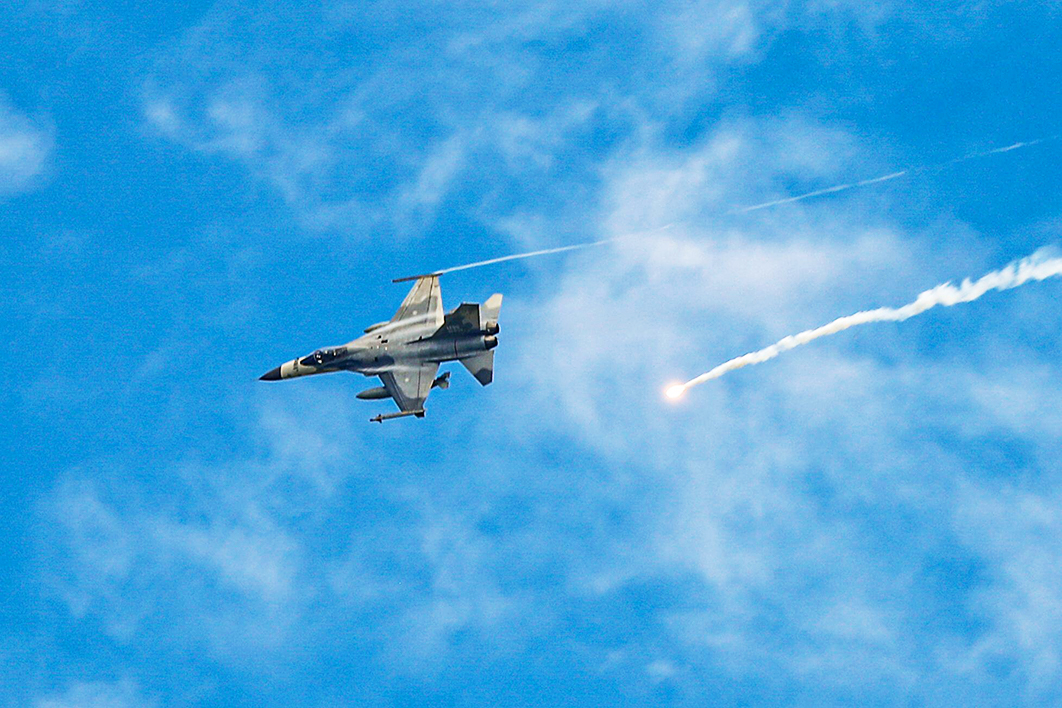The Chinese government’s furious reaction to Nancy Pelosi’s visit to Taiwan rekindled fears that it plans to forcibly unify China. For many, these fears were heightened by Russia’s invasion of Ukraine, which created an alarming precedent. But the progress of the Ukraine war shows that an invasion of Taiwan isn’t feasible now, or at any time in the foreseeable future.
Commentators generally agree a Chinese takeover of Taiwan would involve the following elements, alone or in combination:
• a decapitation strike, using special forces to kill or capture the Taiwanese leadership and install a Beijing-aligned government
• a seaborne invasion, with a large force crossing the Taiwan Strait
• an extensive bombing campaign using aircraft and missiles
• a blockade of the Strait to cut off Taiwan’s imports and exports.
All of these approaches have been tried by Russia, under highly favourable conditions, since it attacked Ukraine. All have failed.
In the lead-up to the 24 February invasion, the Russians were able to assemble large forces on Ukraine’s borders while maintaining ambiguity about their intentions. For fear of inflaming the situation, Ukraine could do little to prepare, and its allies provided little or nothing in the way of lethal military aid.
These conditions were ideal for Russia’s opening move. A rapid assault on Kyiv was planned to begin with the takeover of Hostomel Airport by elite airborne troops, who would be followed in by a much larger airborne force. Things didn’t go to plan: the assault force was driven off with heavy casualties and the main force turned back. By the time Russian land forces reached Hostomel, the chance of a surprise attack was lost.
Even if the strike had not been a military failure, the political calculation on which it was based turned out to be absolutely wrong. Far from welcoming Russian invaders as liberators, Ukrainians fought back furiously. Even in Russian-speaking cities like Kharkiv, Putin found little or no support.
A decapitation strike against Taiwan would face immensely greater difficulties. There would be no possibility of surprise. Taiwan’s air defences have been built up over decades. Reunification has essentially zero support among Taiwanese. And even if the current leadership could somehow be eliminated, local replacements would be equally or more hostile.
The most commonly discussed scenario for forcible reunification is a seaborne invasion. Even before the Ukraine war this idea seemed far-fetched, as a comparison with the Normandy landings in 1944 shows. The Allies had complete air superiority, the narrow English Channel to cross, a wide choice of poorly defended landing sites and a numerical superiority of five to one. The Germans didn’t detect the attack until landing craft were within reach of shore. Even so, the Allies fell far short of their Day 1 objectives.
A Chinese invasion fleet, by contrast, would have to cross the 170 kilometre Taiwan Strait with no chance of avoiding detection, then land on one of a handful of well-protected beaches and face numerically superior defenders.
The Ukraine war drives the lesson home. Before the invasion, Russia’s Black Sea fleet was widely seen as a major strategic asset. When the initial attacks on Kyiv and Kharkiv failed, a seaborne attack on Odessa was generally anticipated. Ukraine had only a handful of domestically produced anti-ship missiles, and its own navy had been wiped out on the first day of the war. Russia was in complete command of the sea.
Yet the attack never took place. The sinking of the Moskva in April by a Ukrainian Neptune missile proved that the Russians had been right to hold back. Russian naval forces were inadequate even to defend the famous Snake Island, kilometres from Ukrainian mainland. With Ukraine’s acquisition of increasing numbers of modern missiles, most of the fleet has been withdrawn entirely to the relative safety of Novorossiysk on the eastern shore of the Black Sea.
Ukraine repelled the Black Sea fleet with a handful of missiles. Taiwan has hundreds, including American-made Harpoons and domestically produced missiles easily capable of hitting Chinese ships before they leave port. Many are truck-mounted and effectively impossible to destroy even with an intensive air campaign.
All the evidence suggests that China understands this. While it is politically necessary for the government in Beijing to maintain that it has the capacity to reunify China by force, the announced plan for doing so is outlandish. It involves securing landing sites with a handful of craft then sending in the main force on lightly modified civilian ferries. No sensible person could take such a plan seriously.
Much the same points can be made about the idea of an extended bombing campaign. Bombing an enemy into submission has been tried many times since its initial success at Guernica in 1937 and has almost invariably failed.
Moreover, Russia’s massive air force has proved incapable of overcoming Ukrainian air defences, or even driving the much smaller Ukraine air force from the skies. With the exception of the mythical “ghost of Kyiv,” air-to-air combat has been almost non-existent, and crewed aircraft have played at most a marginal role. It is highly unlikely that the Chinese air force, operating under far less favourable conditions, could do any better against Taiwan.
Finally, there is the possibility of a blockade. Like the other options for an assault on Taiwan, this idea has always been problematic. It would be easy enough to close the South China Sea to shipping, but that would be more damaging to China than Taiwan, which could use air transport or develop ports on its eastern coast.
By contrast, Russia’s strategy of blocking Ukrainian exports through the Black Sea looked relatively easy, and for a while it seemed to work. But a combination of military failures (notably the loss of Snake Island) and global condemnation forced it to abandon the idea. The resumption of Ukrainian grain exports (billed as a “goodwill gesture”) has reversed one of the few successes of Russia’s war.
Taiwan is clearly aware of this, and has shifted its focus from traditional air and naval warfare to a defensive “hedgehog” strategy based primarily on anti-ship and anti-aircraft missile warfare. (Sam Roggeveen of the Lowy Institute has suggested a similar “echidna” strategy for Australia.)
If an invasion of Taiwan is militarily impossible, why is it continually discussed? The answer is that it is in the interests of all the major parties to pretend that an invasion is a real possibility. The Chinese government can’t concede that it lacks the capacity to unify the country by force. The Taiwanese government has every reason to present itself as being threatened by China. And the US military, particularly the navy, has no incentive to downplay threats that demand high levels of defence expenditure.
This continued focus on conflict over Taiwan, and more generally in the South China Sea, increases the risk of accidental escalation, possibly even involving nuclear weapons. Moreover, it distracts attention from arguably more serious threats, most notably the rise of North Korea as a rogue nuclear power under effective Chinese protection. It also undermines possibilities for cooperation, particularly in relation to climate change.
A realistic Western approach to China would accept that it is a powerful adversary in a number of strategic dimensions but a necessary partner in others. The same realism is needed on the Chinese side. Focusing on the chimerical idea of an invasion of Taiwan is counterproductive on both sides.




